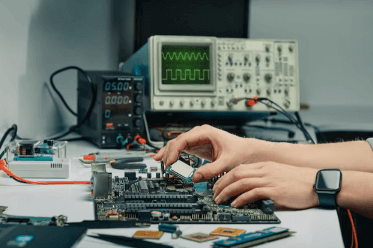Question
(i) t = t w at r = R
(ii) q g (π L R²) = -k (2 π R L) (d t/d r)
(iii) Increasing temperature gradient
Choose the correct option?
a.
Only i
b.
Only ii
c.
i and iii
d.
i and ii
Posted under Conduction With Heat Generation Heat Transfer
Interact with the Community - Share Your Thoughts
Uncertain About the Answer? Seek Clarification Here.
Understand the Explanation? Include it Here.
Q. The constants of integration are to be determined from the relevant boundary conditions which are (i) t = t w at r = R (ii) q g (π L R²) = -k (2 π R L) (d t/d r) (iii)...
Similar Questions
Explore Relevant Multiple Choice Questions (MCQs)
Q. A concrete column used in bridge construction is cylindrical in shape with a diameter of 1 meter. The column is completely poured in a short interval of time and the hydration of concrete results in the equivalent of a uniform source strength of 0.7 W/kg. Determine the temperature at the center of the cylinder at a time when the outside surface temperature is 75 degree Celsius. The column is sufficiently long so that temperature variation along its length may be neglected. For concrete
Average thermal conductivity = 0.95 W/m K
Average density = 2300 kg/m³
View solution
Q. The temperature distribution profile for a solid cylinder is
View solution
Q. A slab of 12 cm thickness and generating heat uniformly at 10⁶ W/m³ has thermal conductivity of 200 W/m degree. Both surfaces of the slab are maintained at 150 degree Celsius. Determine the heat flow rate at the quarter planes
View solution
Q. Consider a convective heat flow to water at 75 degree Celsius from a cylindrical nuclear reactor fuel rod of 50 mm diameter. The rate of heat generation is 50000000 W/m³ and convective heat transfer coefficient is I kW/m² K. The outer surface temperature of the fuel element would be
View solution
Q. For a cylindrical rod with uniformly distributed heat sources, the thermal gradient at half the radius location will be
View solution
Q. Consider heat conduction through a solid sphere of radius R. There are certain assumptions
(i) Unsteady state conditions
(ii) One-dimensional radial conduction
(iii) Constant thermal conductivity
Identify the correct statements
View solution
Q. An 8 cm diameter orange, approximately spherical in shape, undergoes ripening process and generates 18000 k J/m³ hr of energy. If external surface of the orange is at 6.5 degree Celsius, find out the temperature at the center of the orange. Take thermal conductivity = 0.8 k J/ m hr degree for the orange material
View solution
Q. A solid sphere of 8 cm radius has a uniform heat generation of 4000000 W/m³. The outside surface is exposed to a fluid at 150 degree Celsius with convective heat transfer coefficient of 750 W/m² K. If thermal conductivity of the solid material is 30 W/m K, determine maximum temperature
View solution
Q. Identify the correct boundary condition for a hollow sphere with inside surface insulated.
View solution
Q. A hollow sphere (k = 30 W/m K) of inner radius 6 cm and outside radius 8 cm has a heat generation rate of 4000000 W/m³. The inside surface is insulated and heat is removed by convection over the outside surface by a fluid at 100 degree Celsius with surface conductance 300 W/m² K. Make calculations for the temperature at the outside surfaces of the sphere
View solution
Q. A composite slab consists of 5 cm thick layer of steel (k = 146 kJ/m hr degree) on the left side and a 6 cm thick layer of brass (k = 276 kJ/m hr degree) on the right hand side. The outer surfaces of the steel and brass are maintained at 100 degree Celsius and 50 degree Celsius. The contact between the two slabs is perfect and heat is generated at the rate of 4.2 * 10⁵ k J/m² hr at the plane of contact. The heat thus generated is dissipated from both sides of composite slab for steady state conditions. Calculate the temperature at the interface
View solution
Recommended Subjects
Are you eager to expand your knowledge beyond Heat Transfer? We've handpicked a range of related categories that you might find intriguing.
Click on the categories below to discover a wealth of MCQs and enrich your understanding of various subjects. Happy exploring!








